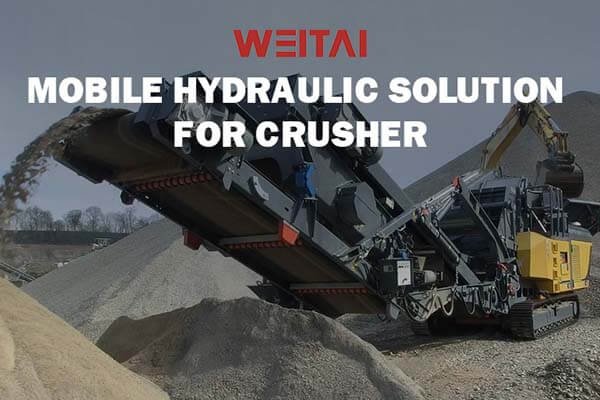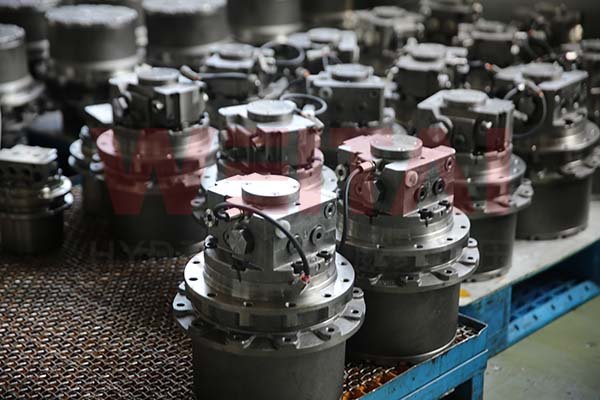1. Overview of Mobile Hydraulics for Mechanical Equipment
Mobile hydraulics for mechanical equipment is widely used in mobile equipment such as engineering machinery. It converts the pressure energy of the liquid into mechanical energy through the hydraulic system, thereby realizing various mechanical actions. In the field of engineering machinery, mobile hydraulics plays a vital role.
With the continuous development of engineering construction, the performance requirements for engineering machinery are getting higher and higher. Mobile hydraulic systems can provide powerful power and precise control for engineering machinery so that equipment such as excavators, loaders, cranes, etc. can efficiently complete various complex tasks. For example, in excavators, hydraulic systems can drive hydraulic cylinders to achieve digging, lifting, rotation, and other actions; in loaders, hydraulic systems can control the lifting, tilting, and rotation of buckets to achieve material loading and handling.
Mobile hydraulic systems have many advantages. First, it has a high-power density and can provide a large output power in a small space. This is very important for mobile equipment with limited space. Secondly, the mobile hydraulic system has a fast response speed and can achieve fast action switching and precise position control. In addition, the hydraulic system also has good overload protection capabilities. When the load exceeds the system’s bearing capacity, the hydraulic system will automatically unload to protect the equipment from damage.
In short, mobile hydraulics for mechanical equipment plays an important role in engineering machinery and other fields. It provides powerful power and precise control for mobile equipment, allowing engineering construction to be carried out more efficiently and safely.

2. Advantages of Mobile Hydraulics
(I) Height adjustability and portability
Equipment such as mobile hydraulic lifts are highly adjustable, and their lifting height can be freely adjusted according to actual needs. Whether it is working on different floors in construction or operating shelves of different heights in warehousing and logistics, it can be easily dealt with. This feature allows the equipment to adapt to the needs of various different operating scenarios. At the same time, the wheeled structure gives the equipment portability, which can be easily moved to the location where the operation is required, greatly improving the operating efficiency. Compared with traditional fixed equipment, mobile hydraulic lifts do not require complicated installation and disassembly processes, saving time and labor costs.
(II) Safety guarantee
Mobile hydraulic equipment is equipped with multiple insurance measures to provide strong protection for the safety of operators. For example, the safety handrail allows operators to have a reliable grip point when working at high altitudes to prevent accidental falls. The safety lock can lock the equipment in time when the equipment stops running or an abnormal situation occurs to prevent accidental start-up or movement. The existence of these safety measures makes operators feel more at ease when using mobile hydraulic equipment and reduces the probability of safety accidents.
(III) High and stable transmission efficiency
The hydraulic transmission system can achieve efficient and stable transmission. Compared with other transmission methods, hydraulic transmission reduces friction loss and improves transmission efficiency. According to the data in the search material, hydraulic transmission has many unique advantages over other transmission methods. Under the condition of transmitting equal power, the hydraulic device has the smallest volume, a lightweight, and compact structure. At the same time, the hydraulic system can easily achieve a wide range of step-less speed regulation through flow control, and the speed regulation range can reach 2000:1. The speed can also be adjusted during the working process. This efficient and stable transmission characteristic enables mobile hydraulic equipment to perform well in various operating scenarios.
(IV) High transmission power
Hydraulic transmission has a strong power output capacity and is very suitable for mechanical equipment that transmits large torque and high speed. For example, in the field of engineering machinery, the hydraulic system can drive large hydraulic cylinders to achieve powerful excavation, lifting, and other actions. Compared with electric motors, the weight of hydraulic motors with the same power is only 10%-20% of that of electric motors, but it can output greater torque. This makes hydraulic transmission have obvious advantages in situations where high power output is required.
(V) Simple operation and easy control
The hydraulic transmission system is easy to operate and can control the liquid flow and pressure by adjusting the hydraulic valve to achieve step-less speed regulation and accurate control. Operators only need to be familiar with simple operating procedures to control the operation of the equipment easily. Whether in construction, warehousing, logistics, or industrial production, this easy-to-control feature makes the use of mobile hydraulic equipment more convenient and quicker. At the same time, the hydraulic system can also cooperate with electrical control to achieve remote control, further improving the convenience and safety of operation.
(VI) Wide range of applications
The hydraulic transmission system can adapt to different working environments and working conditions and has a wide range of applications. Whether in harsh environments such as high temperature, low temperature, humidity, or dust, the hydraulic system can work stably. For example, in the steel industry, hydraulic transmission systems can be used for metallurgical machinery, lifting devices, and other equipment; in civil engineering and water conservancy projects, they can be used for flood control gates and dam devices, riverbed lifting devices, etc. This strong adaptability has made mobile hydraulic equipment widely used in various fields.
(VII) Smooth and reliable operation
The mobile hydraulics transmission system has good anti-interference and stability and runs smoothly. During the operation of the equipment, the vibration is kept to a minimum, and will not cause adverse effects on the surrounding environment and operators. At the same time, the hydraulic system also has an overload protection function. When the load exceeds the system’s bearing capacity, the system will automatically unload and protect the equipment from damage. For example, in a mobile hydraulic lift, when overloaded, the safety device will automatically start to prevent equipment failure.
(VIII) Flexible and convenient layout
The layout of hydraulic components is not strictly restricted by spatial position, which makes it easy for the hydraulic system to form a complex system and adapt to the needs of mobile machinery. In mobile equipment, space is usually limited, and hydraulic components can be flexibly arranged according to actual conditions to make full use of limited space. At the same time, the hydraulic system can connect various components through pipes and hoses, eliminating layout problems and making the design of the equipment more concise and efficient.
3. Application of Mobile Hydraulics in Mechanical Equipment
(I) Application in construction and other fields
Mobile hydraulic lifts play an important role in the construction field. In the demolition, installation, maintenance, and decoration of high-rise buildings, it provides a safe and efficient working platform for construction personnel with its convenient movement and smooth lifting. For example, in the construction of building exterior walls, construction workers can use mobile hydraulic lifts to easily reach work surfaces at different heights to carry out work such as plastering and installing insulation materials. In bridge construction, mobile hydraulic lifts can be used for bridge inspection, repair, and maintenance, and construction workers can inspect bridge structures and repair cracks on the lift.
According to the data in the search material, mobile hydraulic lifts generally have different specifications to choose from. Electric lifting platforms used for aerial work generally have four specifications of 5m, 8m, 10m, 12m, and 15m, and electric lifting platforms used in special environments also have four specifications of 8m, 10m, 12m, and 15m. In addition, there are also portable or fixed special small electric lifts for outdoor use, such as explosion-proof ones. The mobile hydraulic lifting platform adopts a scissor-type mechanical structure, and the object-picking device is made of steel. It is light in weight and runs smoothly and reliably. It is widely used in the construction industry and equipment maintenance.
(II) Wide application in various industries
Hydraulic technology is widely used in both fixed equipment and mobile equipment. In metal cutting machine tools, hydraulic technology makes it easy to realize an automatic working cycle and has good reversing and speed-switching performance. For example, the feeding device of the grinding wheel frame of the grinder, the tool holder of the lathe, the workbench or spindle box of the grinder, the drilling machine, the milling machine, the planer, etc. can all adopt hydraulic technology. It can be stepless adjusted in a large range, has good reversing performance, and is easy to realize an automatic working cycle.
In the field of engineering machinery, the mobile hydraulics are even more indispensable. For example, hydraulic technology is widely used in equipment such as excavators, loaders, rollers, bulldozers, cranes, concrete pump trucks, etc. The excavator’s excavation, lifting, rotation, walking, and other working modes all rely on a hydraulic system to provide power; loaders use hydraulic system to load and transport materials; rollers use hydraulic system to drive vibrators to achieve road compaction; bulldozers use hydraulic system to drive front and rear shovels to achieve excavation, pushing and leveling operations; cranes use the power provided by hydraulic system to lift, move and place heavy objects; concrete pump trucks use hydraulic system to pump concrete from storage tanks to target sites or buildings.
4. Summary
In short, the wide application of hydraulic technology in fixed and mobile equipment provides powerful power and precise control for the production and construction of various industries, greatly improving work efficiency and product quality.



